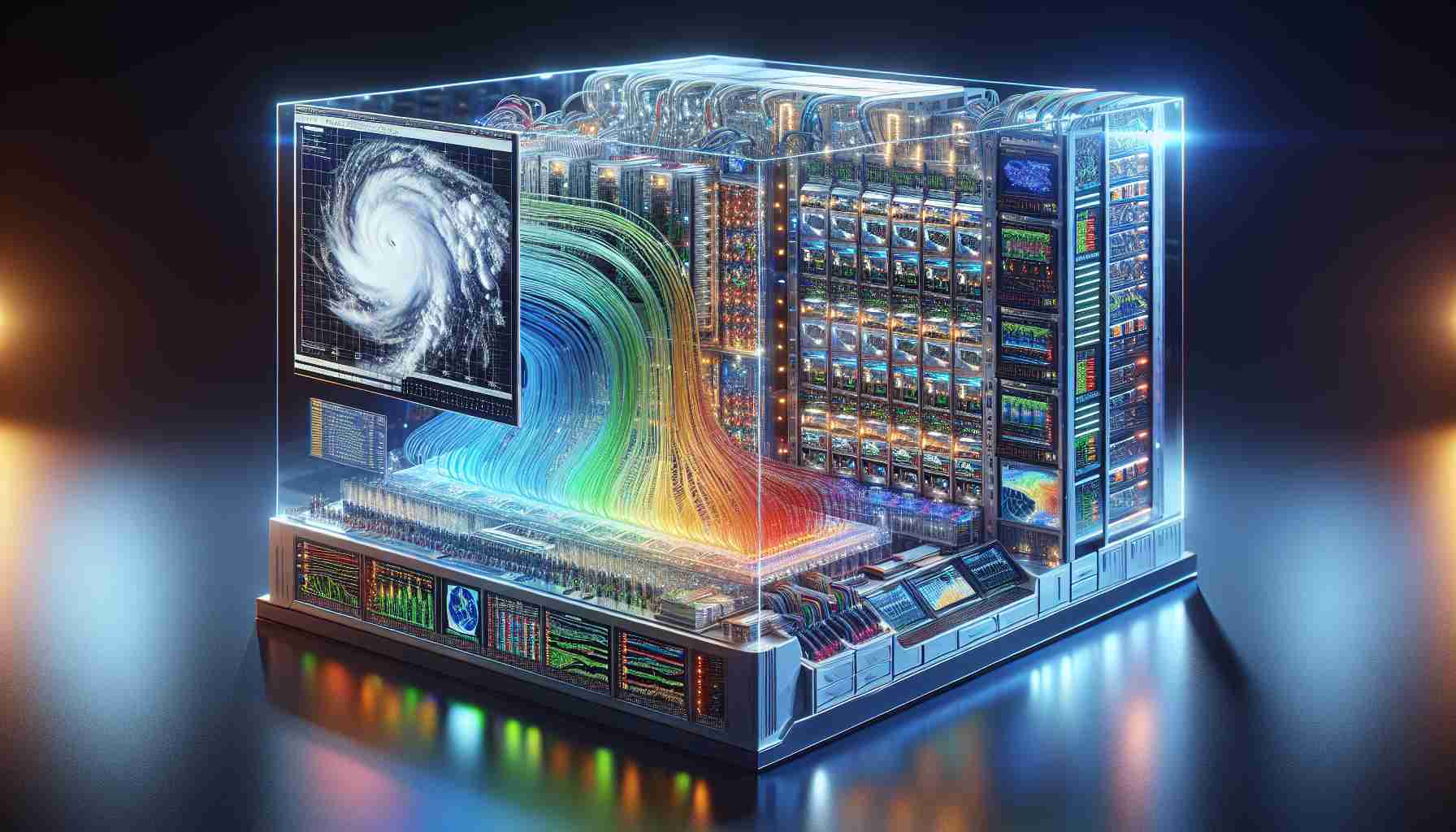In the realm of meteorology, a transformative innovation is on the horizon, with Nvidia’s supercomputers at its core. The ability to deliver rapid and precise weather predictions has been significantly enhanced by utilizing these powerful computing systems.
Revolutionizing Weather Predictions with “Earth-2”
Scientists, in collaboration with the technology giant Nvidia, have embarked on an ambitious project to revolutionize weather forecasting. By harnessing Nvidia’s prowess in creating graphic processing units (GPUs) and their expertise in supercomputing, the team has constructed a highly detailed “digital twin” of our planet, termed “Earth-2”. This virtual replica represents a quantum leap in simulating the Earth’s climate system.
Through advanced machine learning techniques, a subset of artificial intelligence, “Earth-2” is capable of evaluating myriad climatic datasets. It synthesizes global climate observations spanning a half-century, assimilating data from both the atmosphere and the oceans.
A 2-Kilometer-Scale Meteorological Marvel
The digital twin offers an interactive platform where users may pinpoint weather forecasts with remarkable precision down to a 2-kilometer scale. This degree of sophistication means that rather than enduring the traditional wait times for weather models, predictions are now available in mere seconds.
Anticipating Catastrophes: Aid for Forecasters and Governments
While it’s true that initial applications might not include planning weekend outings, the system’s invaluable contribution could be in predicting devastating weather events. By swiftly identifying areas at high risk of floods, hurricanes, and severe storms, artificial intelligence stands to assist forecasters in making more informed decisions. Additionally, government services could benefit by expediting evacuation measures before catastrophic weather strikes.
Taiwan, often beset by severe typhoons, will host the inaugural trials of the “Earth-2” system in 2024. As climate change continues to shape our world, this platform could soon offer a more detailed picture of the potential impacts—a critical tool for urban adaptation strategies in response to upcoming extreme heatwaves and other climatic changes.
Most Important Questions and Answers:
1. What role do Nvidia’s GPUs play in the advancement of weather forecasting?
Nvidia GPUs are integral to processing complex models rapidly, enabling high-fidelity simulations that can analyze massive amounts of climate data more efficiently than traditional CPU-based systems.
2. How does “Earth-2” differ from previous weather prediction models?
“Earth-2” represents a significant upgrade in weather forecasting capabilities, combining high-resolution simulations at a 2-kilometer scale with advanced machine learning techniques. This is a marked improvement over older models, which might have lower resolution and lack the advanced AI integration.
3. What are the key challenges in the field of weather forecasting that this technology helps to address?
A key challenge in weather forecasting is the ability to accurately predict extreme weather events in a timely manner. Nvidia’s supercomputing power aids in rapidly processing data that can predict such occurrences and provide governments and forecasters with essential information for preemptive actions.
Advantages and Disadvantages:
Advantages:
– Speed: The use of GPUs allows for much faster computation, significantly reducing the time required to generate weather models.
– Precision: The detailed 2-kilometer-scale modeling can provide high-resolution forecasts, essential for local planning and response.
– Extreme Weather Event Anticipation: With increased precision and speed, there’s potential for improved anticipation of adverse weather, helping to save lives and reduce property damage.
– Climate Change Insights: The system could also offer valuable insights into longer-term climatic trends and the potential impacts of climate change.
Disadvantages:
– Cost: High-performance computing systems like those provided by Nvidia can be expensive to develop and maintain.
– Complexity: Building and running such sophisticated modeling software requires considerable expertise and resources.
– Data Integration: Integrating diverse climate datasets could be challenging and may require significant preprocessing to ensure accuracy.
Key Challenges or Controversies:
– Data Privacy: The handling of data may raise privacy concerns, especially when integrating datasets from diverse sources.
– Access and Equity: There could be disparities in access to the benefits of the new technology, with less developed regions possibly lagging behind.
Related Links:
You can find more information about Nvidia and their work in the area of supercomputing and AI on their official website: Nvidia.
For further details regarding the latest developments in meteorology and climate science, you might explore the website of the National Oceanic and Atmospheric Administration (NOAA): NOAA.
The source of the article is from the blog shakirabrasil.info

